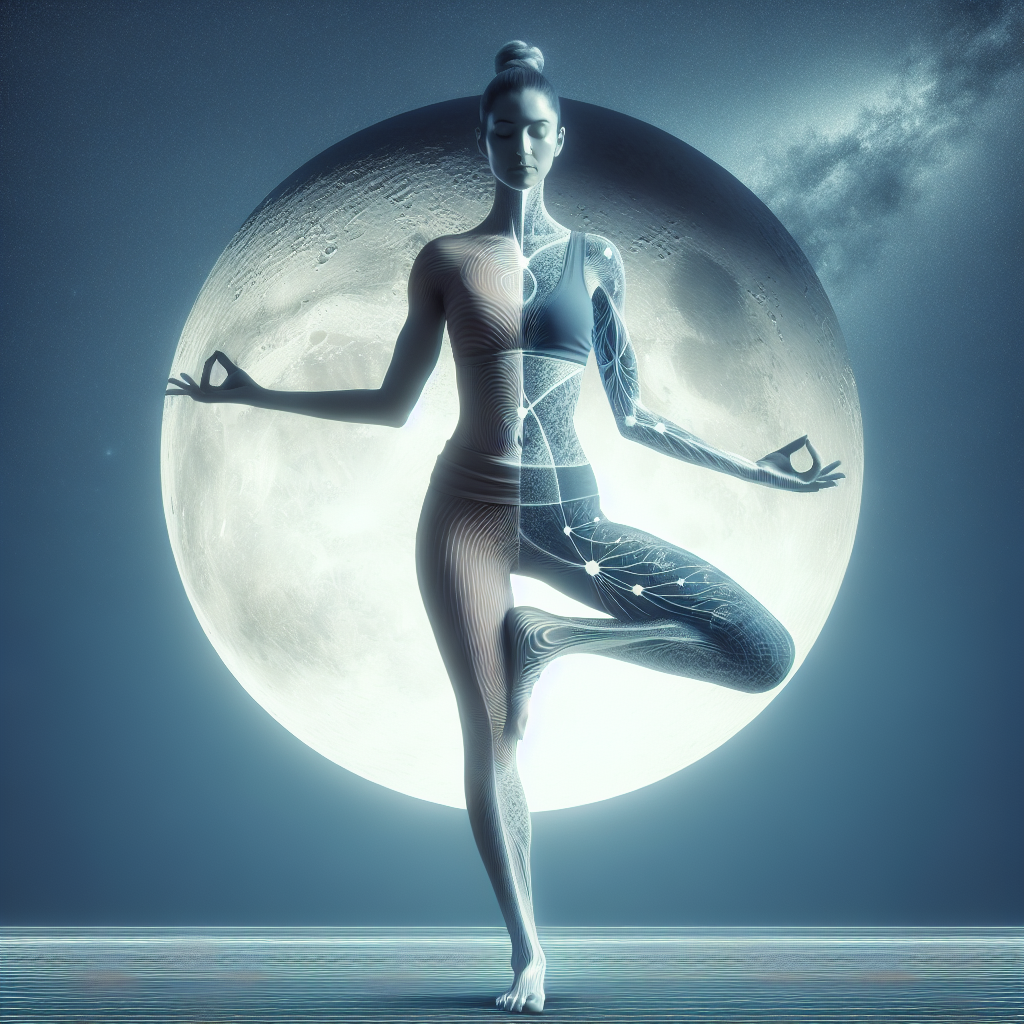Ready to improve your posture and balance? Look no further than Yoga and Alexander Technique. These two ancient practices have been proven to have a profound impact on mind, body, and soul. During our journey, we’ll explore the transformative power of Yoga and the Alexander Technique, discovering how they work together to promote inner peace, holistic well-being, and a more aligned and confident you. So, let’s roll out our mats and embark on this enlightening and empowering adventure!

I. Yoga and Alexander Technique: Overview
Yoga and Alexander Technique are both practices that focus on improving posture and balance, but they approach these goals in different ways.
A. What is Yoga?
Yoga is an ancient practice that originated in India and has gained popularity worldwide. It involves a combination of physical postures, breath control, and meditation techniques. The aim of yoga is to promote physical and mental well-being, and it has been shown to have numerous health benefits.
B. What is Alexander Technique?
The Alexander Technique, named after its creator F. Matthias Alexander, is a method for improving posture and movement. It focuses on retraining the body to move with greater ease and efficiency by releasing unnecessary tension and allowing the natural alignment of the body to emerge.
C. Importance of Posture and Balance
Posture and balance play a crucial role in our overall well-being. Poor posture can lead to aches and pains, muscle imbalances, and even injury. It can also negatively impact our breathing, digestion, and overall energy levels. Similarly, poor balance can increase the risk of falls and injuries, especially as we age.
II. Benefits of Yoga for Posture and Balance
Yoga offers several benefits that can help improve posture and balance.
A. Developing Body Awareness
One of the key aspects of yoga is developing a deep sense of body awareness. Through the practice of yoga, we learn to pay attention to our body and how it moves and feels in different postures. This increased body awareness helps us identify areas of tension or imbalance and allows us to make the necessary adjustments to improve our posture.
B. Strengthening Core Muscles
Many yoga poses require engaging the core muscles, which include the muscles of the abdomen, back, and pelvis. By strengthening these muscles, yoga helps to support the spine and improve overall posture. A strong core is essential for maintaining proper alignment and balance in both static and dynamic movements.
C. Improving Flexibility and Range of Motion
Flexibility is another key component of good posture and balance. Tight muscles can limit the range of motion in our joints, leading to imbalances in the body and poor posture. Yoga incorporates a variety of stretching exercises that help to increase flexibility, improve joint mobility, and prevent muscle imbalances.
D. Reducing Muscle Tension and Stress
Stress and muscle tension can significantly affect our posture and balance. Yoga practice involves deep breathing and relaxation techniques that help to release tension and reduce stress levels. By promoting relaxation, yoga helps to alleviate muscle tightness and improve overall posture.
E. Enhancing Proprioception
Proprioception is our ability to sense the position, movement, and alignment of our body parts. Yoga practice enhances proprioception by requiring us to pay attention to our body’s position in various poses. This increased proprioceptive awareness helps us maintain proper posture and balance both on and off the yoga mat.

III. Benefits of Alexander Technique for Posture and Balance
The Alexander Technique offers its own unique set of benefits for improving posture and balance.
A. Promoting Good Posture
The Alexander Technique focuses on promoting good posture by addressing the harmful habits that can lead to poor alignment. By becoming aware of these habits and learning to release unnecessary tension, individuals can achieve a more balanced and upright posture.
B. Releasing Muscular Tension
Muscular tension is a common cause of poor posture and balance. The Alexander Technique teaches individuals to release tension in the muscles and allow the body to move more freely. This release of tension is essential for achieving and maintaining good posture and balance.
C. Improving Alignment and Balance
The Alexander Technique emphasizes the alignment of the head, neck, and spine, which is crucial for maintaining good posture and balance. By aligning these key structures correctly, individuals can improve their overall balance and stability.
D. Facilitating Efficient Movement
Efficiency of movement is another important factor in maintaining good posture and balance. The Alexander Technique teaches individuals to move with less effort and improve the coordination of their movements. This increased efficiency helps to prevent unnecessary strain on the body and improves overall movement quality.
E. Enhancing Body Awareness
Similar to yoga, the Alexander Technique emphasizes body awareness. Through the practice of the technique, individuals become more attuned to their body and develop a greater sense of how it moves and feels. This heightened body awareness allows individuals to make conscious choices about their posture and movement, leading to improved overall balance.
IV. Common Principles in Yoga and Alexander Technique
While yoga and the Alexander Technique are distinct practices, they share several common principles that contribute to improved posture and balance.
A. Mind-Body Connection
Both yoga and the Alexander Technique recognize the importance of the mind-body connection. They emphasize the idea that our physical posture and movements are influenced by our thoughts, emotions, and attitudes. Cultivating a positive and harmonious mind-body connection is essential for achieving optimal posture and balance.
B. Mindful Movement
Mindfulness plays a significant role in both yoga and the Alexander Technique. Both practices encourage individuals to be fully present in the moment and engage with their body and movement consciously. By practicing mindful movement, individuals can improve their body awareness, posture, and balance.
C. Breath Awareness
Breath awareness is an integral part of both yoga and the Alexander Technique. Both practices emphasize the importance of deep, diaphragmatic breathing for relaxation, stress reduction, and improved posture. Developing an awareness of the breath helps individuals to ground themselves and maintain a centered alignment.
D. Balance and Alignment
Both yoga and the Alexander Technique prioritize balance and alignment in the body. They teach individuals to achieve optimal alignment, distribute weight evenly, and utilize their body’s natural support systems. This focus on balance and alignment contributes to improved posture and stability.

V. Integrating Yoga and Alexander Technique
While yoga and the Alexander Technique are effective on their own, integrating the two practices can further enhance posture and balance.
A. Cultivating Mindfulness in Yoga Practice
Integrating principles of the Alexander Technique into yoga practice involves cultivating mindful awareness of the body, movements, and alignment. By paying attention to the principles of good posture and efficient movement, individuals can amplify the benefits of their yoga practice.
B. Applying Alexander Technique Principles in Yoga
Applying Alexander Technique principles during yoga involves being mindful of unnecessary tension and releasing it throughout the practice. It means focusing on alignment and balance and avoiding excessive effort in poses. By applying these principles, individuals can improve their posture and balance in yoga.
C. Specific Yoga Asanas to Enhance Posture and Balance
Certain yoga asanas, or poses, are particularly beneficial for enhancing posture and balance. Poses like Mountain Pose (Tadasana), Tree Pose (Vrksasana), and Warrior Pose (Virabhadrasana) can help improve alignment, strengthen the core, and promote better balance. These poses can be integrated into a yoga practice to specifically target posture and balance improvement.
VI. Case Studies: Success Stories
Real-life case studies demonstrate the effectiveness of integrating yoga and the Alexander Technique for improving posture and balance.
A. Case Study 1: Using Yoga and Alexander Technique to Improve Posture
In this case study, a person who struggled with poor posture and chronic pain found relief by integrating yoga and the Alexander Technique into their routine. By practicing yoga to strengthen core muscles and improve flexibility, combined with the Alexander Technique to release tension and promote good posture, the individual experienced significant improvements in their posture and a reduction in pain.
B. Case Study 2: Enhancing Balance through Yoga and Alexander Technique
This case study focuses on an individual who had difficulty with balance and was at risk of falls. By integrating yoga and the Alexander Technique, this person improved their strength, alignment, and body awareness. Through targeted yoga asanas and the Alexander Technique principles of efficient movement and balance, the individual experienced enhanced stability and a reduced risk of falls.
VII. Tips and Recommendations
To make the most out of the benefits of yoga and the Alexander Technique for posture and balance, consider the following tips and recommendations:
A. Finding Qualified Instructors
When practicing yoga or the Alexander Technique, it’s important to find qualified instructors who can guide you safely and effectively. Look for instructors who have completed reputable training programs and have experience working with individuals with posture and balance issues.
B. Practicing Regularly
Consistency is key when it comes to improving posture and balance. Aim to practice yoga and the Alexander Technique regularly to see long-term results. Even short daily sessions can be beneficial in developing body awareness, strength, and alignment.
C. Listening to the Body
Pay close attention to your body’s signals during your practice. If something feels uncomfortable or painful, modify the pose or movement, or seek guidance from a qualified instructor. Listening to your body and honoring its limits is essential for a safe and effective practice.
D. Gradual Progression
Avoid pushing yourself too hard or progressing too quickly. Take a gradual approach to improving your posture and balance. Start with easier poses or movements and gradually increase the challenge as your body becomes stronger and more balanced.
E. Seeking Professional Guidance
If you have specific posture or balance concerns or are dealing with chronic pain or injuries, it’s advisable to seek professional guidance. Consult with a healthcare professional, physical therapist, or an experienced yoga teacher or Alexander Technique practitioner who can provide personalized guidance and support.
VIII. Precautions and Considerations
While yoga and the Alexander Technique are generally safe and beneficial practices, it’s important to be aware of the following precautions and considerations:
A. Individual Limitations
Everyone’s body is unique, and certain poses or movements may not be suitable for everyone. Be mindful of your individual limitations and adapt the practice to suit your body’s needs. Work within a comfortable range of motion and avoid any movements that cause pain or discomfort.
B. Consulting a Healthcare Professional
If you have any pre-existing medical conditions, injuries, or concerns about your ability to safely practice yoga or the Alexander Technique, consult with a healthcare professional before starting. They can provide guidance and address any specific considerations based on your individual health and circumstances.
C. Modifications and Adjustments
Feel free to modify or adjust the poses or movements to make them more accessible and comfortable for your body. There is no one-size-fits-all approach, and it’s important to listen to your body and make modifications as necessary.
D. Avoiding Overexertion
While it’s important to challenge yourself, avoid overexertion or pushing past your limits. Honor your body’s needs and rest when needed. Pushing too hard can lead to injuries or setbacks in your posture and balance improvement journey.
E. Managing Pain or Discomfort
If you experience pain or discomfort during your practice, it’s important to address it. Engage in gentle stretching, use props or modifications, or seek guidance from a qualified instructor. Pain or discomfort should not be ignored or tolerated, as it can indicate improper alignment or technique.
IX. Conclusion
Yoga and the Alexander Technique offer powerful tools for enhancing posture and balance. Their unique approaches, when integrated, provide a comprehensive approach to improving body awareness, alignment, and coordination. By practicing yoga mindfully, applying Alexander Technique principles, and seeking professional guidance as needed, individuals can achieve significant improvements in their posture and balance, leading to better overall well-being and quality of life.
